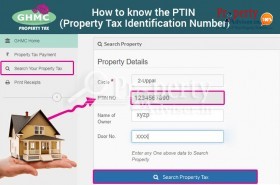This is the second and the last article in the series, Checklist for Buying a House.
In the first article, we looked into the due-diligence checks and documents to be verified while buying a house. In this article, we will look at the financial and tax implications of buying a house using a bank loan.
How do you Finance the Purchase of a House or Apartment?
If you have finalized the house you want to buy, you can compare the cost, availability of home loans, and the rate of interest charged by banks.
Your options to finance the purchase partly depend on the size of finance you need. To estimate the size of finance, consider the following costs:
Registration of Property
Property is registered by submitting all the required documents and paying the stamp duty and registration fees in the Sub Registrar’s office. Read this article to know how to calculate stamp duty and registration charges.
The buyer bears the additional cost of registration and stamp duty. Therefore, you must calculate the total cost of the house by adding these other costs to your purchase price.
Goods and Services Tax (GST)
You must pay GST if you are buying a property that is under construction. GST is applicable from July 1, 2017. Before that, the other taxes such as Sales Tax and Value Added Tax (VAT) was charged at the time of buying an under-construction property.
GST is charged only on under-construction properties, and not on ready-to-occupy properties, plots, and lands.
GST is charged at the rate of 18% of 2/3rds of the cost of the house (the remaining 1/3rd constitutes the cost of land, and GST is not levied on land). Therefore, it approximately works out to 12% of the cost of the house.
However, you can claim the Input Tax Credit when you buy a house and pay GST.
What is Input Tax Credit?
Input Tax Credit is the amount that you can reduce from your GST outgo, equal to the Input GST paid for the purchase of raw materials and work contracts.
It means that if your GST is 12% of the cost of the house, you can reduce the GST paid on raw materials and work contracts (example, fees paid to the architect).
Case 1: If your house costs Rs 40 lakhs.
GST @ 18% on 2/3rds of Rs 40 lakhs = Rs 4.8 lakhs
Assume that the GST on raw materials and work contracts= Rs 4 lakhs and it is already paid at the time of purchase of raw material or work contracts.
Input Tax Credit = Rs 4 lakhs
You must pay 4.8 - 4 = Rs 80,000 as GST
Case 2: If your house costs Rs 40 lakhs.
GST @ 18% on 2/3rds of Rs 40 lakhs = Rs 4.8 lakhs
Assume that the GST on raw materials and work contracts = Rs 5.6 lakhs and it is already paid at the time of purchase of raw material or work contracts.
Input Tax Credit = Rs 4.8 lakhs (Rs 4.8 lakhs or Rs 5.6 lakhs, whichever is lower).
You must pay zero GST.
Home Loans
To take a loan to buy a house, you must calculate the total amount that you will have to pay to the bank including interest, principal amount, and the processing fees.
Down Payment
While discussing the amount of loan with the bank, you must calculate the amount of down payment that you must pay to the builder or seller.
Home Loans: Pre-EMI and Full-EMI
The bank sanctions the loans after completing due diligence of the property (financial, field investigation, technical, legal), and your credit appraisal (by checking the CIBIL score).
Pre-EMI
You can choose Pre-EMI option only when you are buying a house that is under construction. While taking a loan to buy the house, you can opt for Pre-EMI.
when to choose Pre-EMI
Pre-EMI is calculated as the monthly interest on the amount of loan disbursed by the bank.
Let us assume that you want to take a loan for Rs 36 lakhs. In the pre-EMI option, the bank will disburse Rs 3 lakhs every month for 12 months, and you will repay Pre-EMI to the bank every month. This Pre-EMI amount is calculated as simple monthly interest on the total amount outstanding.
If you have chosen the Pre-EMI option for the above sum, at the end of the first month Rs 3 lakhs is disbursed at the end of the first month. Let us also assume that the rate of interest is 8.5% p.a. for a term of 20 years.
The Pre-EMI you will pay at the end of the first month is: 8.5/12 * 3 lakhs = 0.71% * 3 lakhs = Rs 2130.
In the second month, it is 0.71% * 6 lakhs = Rs 4260, and so on.
In this case, the Full-EMI starts once you get the possession of the property and will be equal to Rs 31,242 per month for 20 years.
Full-EMI
The other option available is the Full-EMI which is calculated as the equated monthly installment on the total amount of loan, irrespective of how much you have utilised from the disbursed bank loan.
There are calculators available online that can help you find out the Full-EMI amount if you enter the amount of loan sanctioned, the term of the loan, and rate of interest.
In the above example, the Full-EMI amount is equal to Rs 31,242. You must pay the Full-EMI every month, for 20 years.
Pre-EMI vs Full-EMI
The Pre-EMI option does not require you to pay the principal amount. It constitutes only the interest component on the loan amount disbursed so far.
You choose Pre-EMI option if:
- You are living in a rented house. In this case, paying the rent for the house you are living and the Full-EMI for the house under construction can be a financial burden. In this case, you can opt for Pre-EMI.
- You want to invest in an under-construction property with a plan to sell it when you get possession. By opting for Pre-EMI, your initial investment is significantly lower than paying the Full EM every month.
- Can you invest the difference between the Pre-EMI and Full-EMI of a property to generate a higher return than home loan interest rate? If yes, choose Pre-EMI and deploy your money in instruments that yield higher returns.
You must remember that opting for Pre-EMI will mean that you will pay additional interest to the bank.
In the above example, the total Pre-EMI interest amount = Rs 40,63,743 while the Full-EMI interest amount = Rs 38,97,993.
By choosing the Pre-EMI option, you will pay Rs 1,65,750 more to the bank.
Deduction from Taxable Income
When you choose the Pre-EMI option, you cannot deduct the Pre-EMI amount from the taxable income. However, when you pay Full-EMI, you can deduct both interest and principal component from taxable income, even though the house is under construction.
Income Tax Declaration
If you are buying a house that costs more than Rs 50 lakhs, deduct 1% tax at source (TDS) from the amount to be paid to the seller and deposit the amount with the tax authorities.
In case you sell a house and use the proceeds from the sale of that house to buy a new one, then the Long Term Capital Gains (LTCG) is exempt if you purchase or construct the house in the name of the seller within 2-3 years. You must declare all the details while filing your Income Tax Return.
Conclusion
Weigh in all the above factors to deploy your hard-earned money in optimally.
By: LOTUS TECH
















